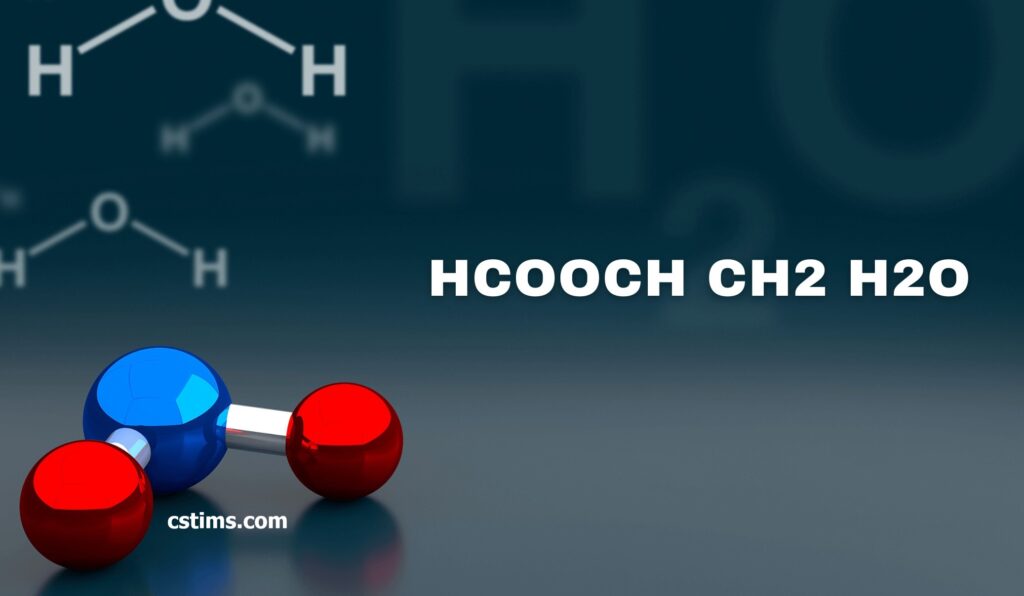Introduction
The HCOOH · CH₂ · H₂O system represents a deceptively simple yet powerful combination of formic acid (HCOOH), a methylene-related unit (CH₂), and water (H₂O). This trio, often written informally as HCOOH · CH2O · H2O, plays a pivotal role in modern transfer hydrogenation, catalytic reductions, and organic synthesis strategies. In this article, we explore the origins, mechanisms, applications, and practical advantages of hcooch ch2 h2o, shedding light on how this mixture transforms complex transformations into accessible lab protocols.
What is the HCOOH CH2 CH2H2O system?
At its core, it combines three essential chemical components:
- HCOOCH (formic acid or related esters) Acts as the hydrogen donor.
- CH₂ (methylene group or solvent) modulates reactivity and solubility.
- H₂O (water) provides a polar environment and supports proton transfer.
This synergy enables hcooch ch2 h2o to deliver hydride species or molecular hydrogen under mild conditions, without the need for pressurized gas cylinders. The presence of CH₂ (as methylene chloride or methyl formate) often improves the reaction environment for organic substrates, while water ensures catalyst activity and proton mobility.
How HCOOH CH2H2O Works
H2 Generation & Hydride Transfer
The primary mechanism in HCOOH · CH₂ · H₂O involves decomposition of formic acid (HCOOH) into CO₂ and H₂:
HCOOH → CO₂ + H₂
Under catalytic conditions, hydride species emerge via:
HCOOH + M → M–H + CO₂
These metal–hydride complexes then target unsaturated or reducible functional groups, like imines, ketones, or nitro compounds. The hcooch ch2 h2o environment promotes efficient hydrogen transfer due to continuous regeneration of hydride donors from formic acid and water.
Catalyst Activation
Hcooch ch2 h2o also serves as a reductive activator, turning precursor salts like Pd(II), Ru(III), or Rh(III) into the active metal(0) hydride form. This dual-function reducing catalyst and substrate simplifies reaction setup and enhances safety relative to high-pressure H₂ gas.
Just as IDR Plans for Student Loans help simplify and manage financial burdens for students by adjusting payments based on income, this dual-function reducing system, acting as both catalyst and substrate,e simplifies reaction setup in the lab. It enhances safety by eliminating the need for high-pressure H₂ gas, offering a more accessible and manageable approach to complex chemical reductions.
Applications of hcooch ch2 h2o in Organic Chemistry
Imines & Ketones
Using hcooch ch2, H2O, chemists can convert imines to amines or ketones to alcohols under mild temperatures. The water component moderates exotherms, while CH₂-based solvents stabilize hydrophobic reactants.
Nitro Group Reduction
Nitroarenes, when exposed to hcooch ch2 h2o in the presence of Pd/C or Ru catalysts, undergo smooth reduction to anilines. This is a safer, coherent alternative to pressurized H₂.
Catalyst Generation In Situ
Rather than pre-generating palladium black or rhodium hydrides, hcooch ch2 h2o allows direct formation from precursor salts, enhancing reproducibility and minimizing handling of unstable intermediates.
Biomass Conversion & Selective Reductions
Within biorefinery research, HCOOH · CH₂ · H₂O enables selective hydrogenations of biomass-derived substrates, such as levulinic acid to γ-valerolactone, highlighting green chemistry potential.
Advantages of HCOOH CH2H2O
Safety
No need for flammable hydrogen cylinders: hcooch ch2 h2o releases H₂ in situ under mild pressure, drastically reducing risk.
Tunability
By altering the CH₂ medium (e.g., methylene chloride vs. methyl formate), chemists can customize solubility, reaction rate, and product separation.
Catalytic Efficiency
Simultaneous catalyst activation and substrate reduction streamline processes, often improving yields and selectivity.
Green Profile
Only by-products are innocuous CO₂ and water, aligning with sustainable chemistry principles.
Real-World Examples of HCOOH CH2H2O Usage
- Methyl ketone reduction, Researchers used hcooch ch2 h2o with Ru-based catalysts to achieve >95% conversion to secondary alcohols.
- Imines to amines, Pd/C in hcooch CH2, H2O environments reached >90% yield under ambient pressure.
- Nitrocompound reduction, Nitrobenzene to aniline at room temperature, with high tolerance toward halogen substituents.
These examples validate HCOOH · CH2 · H2O as both robust and versatile across functional groups.
Optimizing Conditions with hcooch ch2 h2o
| Parameter | Typical Range / Example |
|---|---|
| Catalyst Load | 0.5–5 mol % Pd, Ru, Rh |
| Temperature | Room temp to 90 °C |
| Solvent Ratio | CH₂‑solvent:water = 4:1 to 1:1 |
| Additives | Base (e.g. Et₃N), surfactants |
| Reaction Time | 1–24 hours |
Fine-tuning each parameter is critical to harnessing the full potential of HCOOH · CH2 · H2O in diverse synthetic settings.
Challenges & Considerations
Despite its strengths, hcooch ch2 h2o has limitations:
-
Gas evolution, CO₂ build‑up may inhibit autogenous pressure reactions.
-
Formic acid purity, Impurities may poison catalysts, requiring high-grade reagents.
-
Solvent hazards, CH₂Cl₂ is volatile; methyl formate needs careful handling due to flammability.
Mitigation strategies involve robust reactor design, rigorous reagent purification, and alternative solvent selection, ensuring the hcooch ch2 h2o system remains safe and effective.
Future Directions for HCOOH CH2H2O
-
Flow chemistry, Continuous‑flow systems using hcooch ch2 h2o could enhance scale‑up and reproducibility.
-
Heterogeneous catalysts, Development of fixed‑bed catalysts compatible with HCOOH, CH2H2O, could improve recyclability.
-
Bio‑based substrates, Expansion into direct conversion of raw biomass in HCOOH CH2H2O systems could advance sustainable chemical manufacturing.
Conclusion
In conclusion, the hcooch ch2 h2o system offers a safe, efficient, and versatile solution for catalytic reductions and hydrogenation reactions. Its dual-function nature simplifies both catalyst activation and substrate conversion. Much like IDR Plans for Student Loans streamline repayment, this chemical trio streamlines complex lab processes. It’s a practical choice for sustainable and modern organic synthesis.


